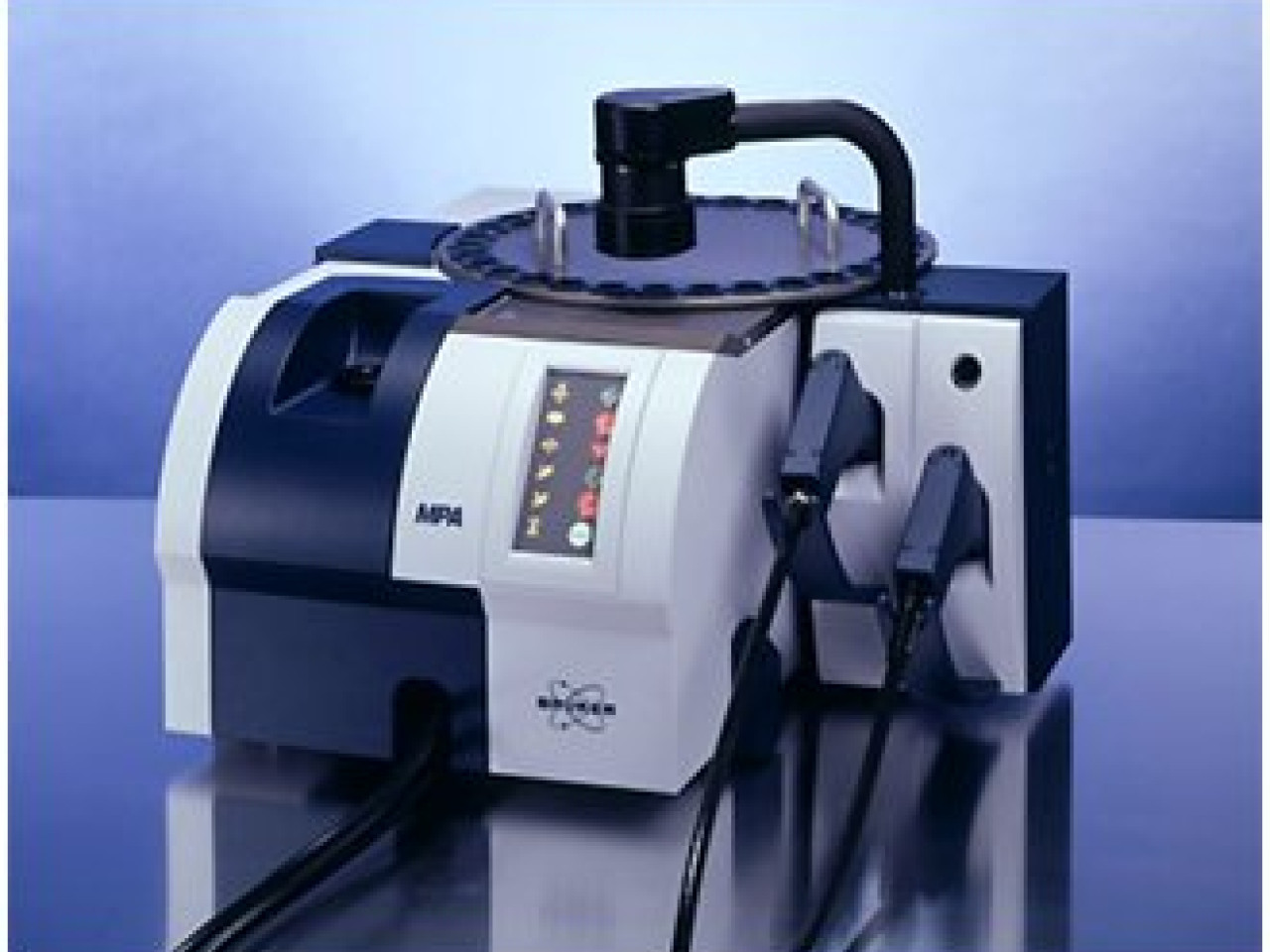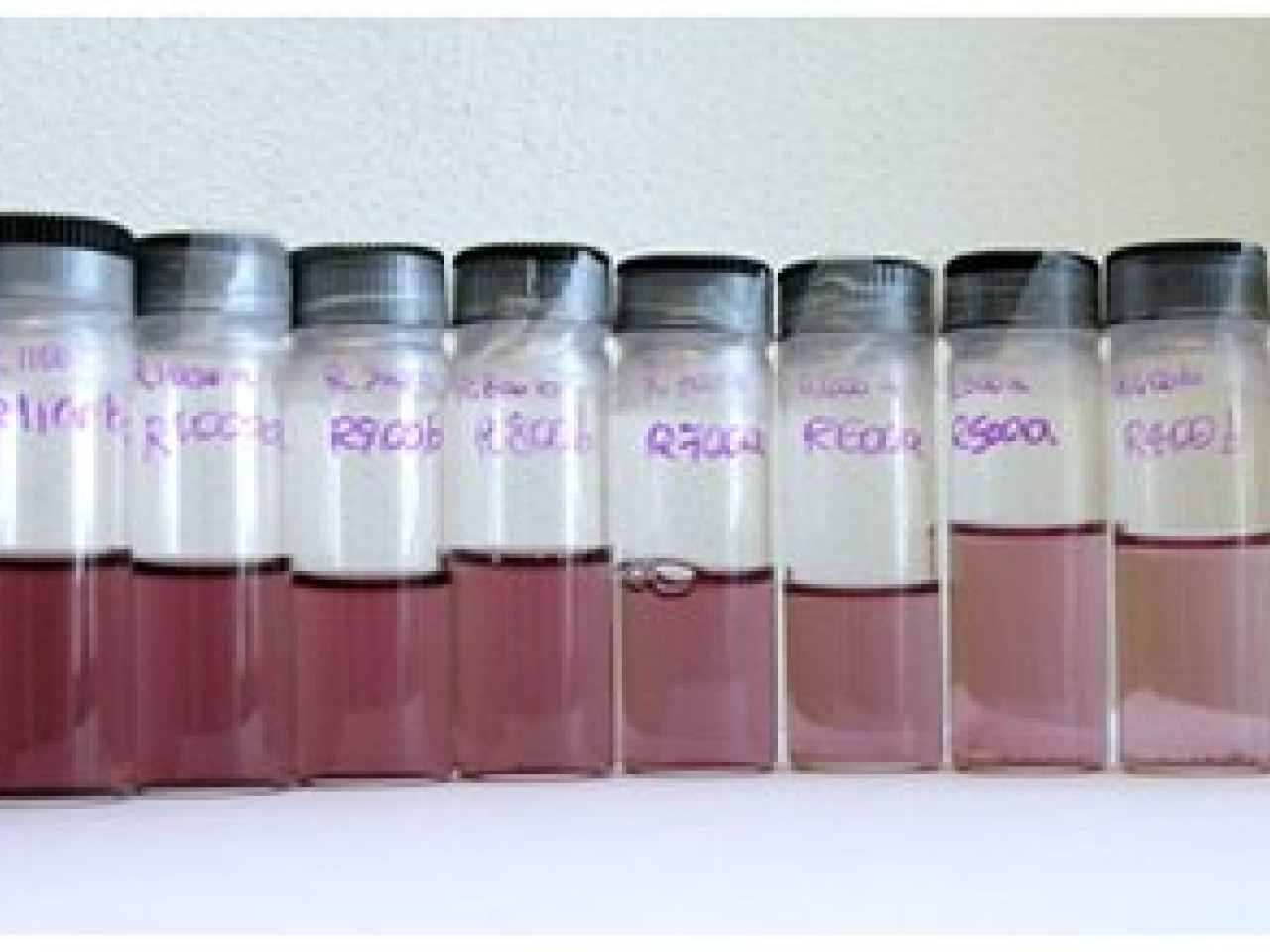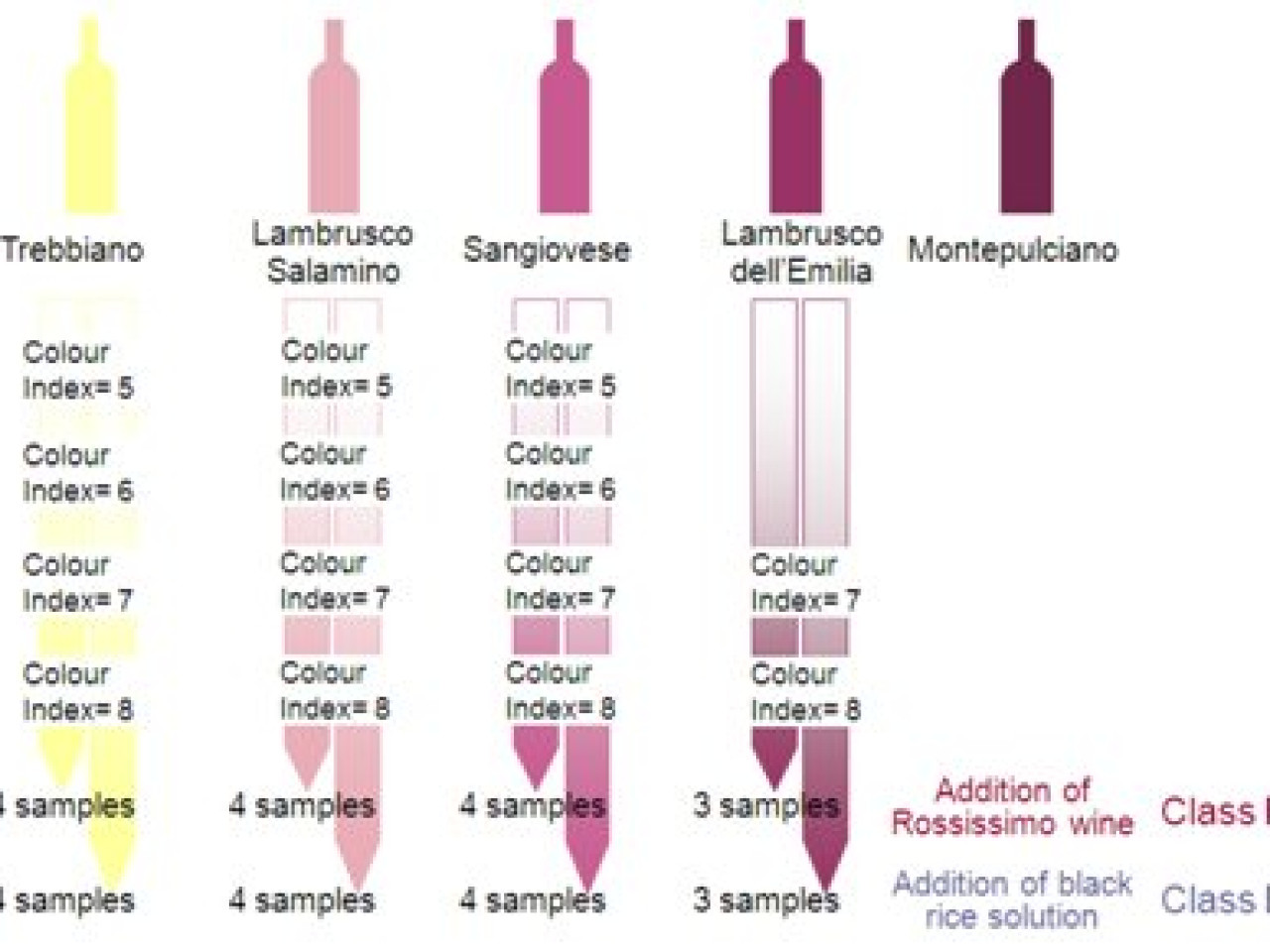NIR spectroscopy is a rapid and cheap technique for the analysis of food samples, which do not have to be "prepared", but can be analyzed as they are. In this context, the CHIMSLAB research group of BIOGEST-SITEIA has already successfully implemented several studies, including: classification of wheat samples in different quality classes depending on their end use identification of the presence of flour as adulterant in semolina samples monitoring of flour behavior during processing in a industrial bakery at-line monitoring of the leavening process in a industrial bakery technological characterization of gluten-free doughs classification of pig fat samples extracted from different subcutaneous fat layers identification of red wines adulterated by addition of anthocyanins extracted from black rice
 The spectrophotometer used for NIR analysis
The spectrophotometer used for NIR analysis
The determination of the total content of anthocyanins in wine is carried out by UV-Visible spectroscopy that, despite being a fast and reliable method, does not allow the determination of the individual molecules. The provenance of the anthocyanins from plant species other than grape can be assessed by HPLC chromatography that, however, is less fast and requires specialized personnel. The NIR spectroscopy combines the speed typical of spectroscopic techniques with the specificity typical of chromatography.
Construction of predictive models for the rapid differentiation of food products in quality classes; construction of predictive models to quantify different properties (mainly of chemical nature) of the products; automation of control systems by implementing appropriate control charts; increase of the knowledge about the product/process by exploratory analysis of NIR data.
 Solutions of anthocyanins at different concentrations
Solutions of anthocyanins at different concentrations
Identification of red wines adulterated by addition of anthocyanins extracted from black rice
Two sets of samples artificially added with different quantities of Rossissimo dell'Emilia wine and anthocyanins extract from black rice were prepared, then the samples were subjected to NIR analysis. The acquired spectra were processed with various techniques of signal processing in order to discriminate samples adulterated with anthocyanins from black rice and unadulterated samples. The results confirm that NIR spectroscopy is able to identify products adulterated with anthocyanins from black rice. This demonstrates that the NIR spectrum contains the chemical information that is usually obtained by more expensive and complex laboratory analyses, with considerable advantages of speed and simplicity for the acquisition of experimental data.
Winery
By increasing the number and variety of wine samples, the predictive ability of the models and their applicability to real complex situations can be improved. In addition, various clues collected in the experimental phase lead us to believe that it is possible to develop calibration models able to determine not only the presence/ absence of adulterant, but to some extent also its concentration.
 Experimental plan for sample adulteration
Experimental plan for sample adulteration

